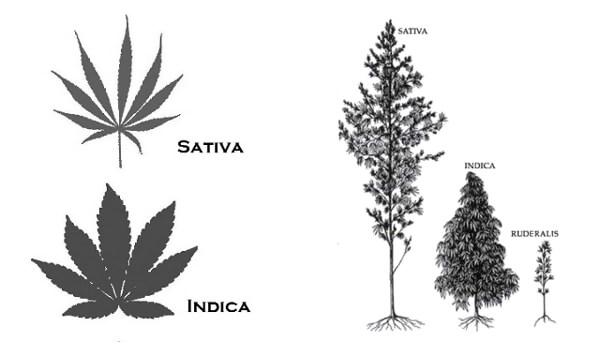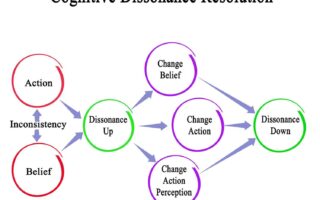Title: Understanding the Classification of Marijuana: A Complicated Legacy
Marijuana, a plant that has captivated human interest for centuries, occupies a unique position in the landscape of modern pharmacology and social discourse. As society grapples with shifting perceptions and evolving legal frameworks, the classification of marijuana as a drug comes into sharp focus, revealing a tapestry woven from threads of history, politics, health, and culture. Once relegated to the shadows of stigma and prohibition, marijuana is now at the center of a vibrant debate that challenges conventional notions of drug classification. This article aims to unravel the complexities surrounding the categorization of marijuana, exploring how scientific, legal, and societal perspectives converge to shape our understanding of this controversial plant. Join us as we delve into the nuances of marijuana’s classification, illuminating the path from its ancient origins to its modern applications in medicine and beyond.
Table of Contents
- Understanding the Historical Context of Marijuana Classification
- Exploring the Medical and Recreational Implications of Marijuana as a Drug
- Navigating the Legal Landscape: Variations Across Regions
- Recommendations for Future Research and Policy Development in Marijuana Classification
- Q&A
- Wrapping Up
Understanding the Historical Context of Marijuana Classification
The classification of marijuana has evolved significantly over the decades, driven by a complex interplay of social, political, and scientific factors. Initially, in the early 20th century, marijuana was recognized more for its medicinal potentials and relaxing properties. However, by the 1930s, the rise of the anti-drug movement pushed it into the realm of criminality, greatly influenced by sensational propaganda that associated cannabis with crime and moral decay. As a result, the Marihuana Tax Act of 1937 effectively made cannabis illegal, leading to its portrayal as a dangerous substance devoid of any legitimate use. This period marked a significant turning point that influenced public perception and policy surrounding the plant for decades.
In the latter half of the 20th century, the cultural revolution sparked renewed interest in marijuana, coinciding with a growing body of research highlighting its therapeutic benefits. The Controlled Substances Act of 1970 solidified its classification as a Schedule I drug, meaning it was deemed to have a high potential for abuse and no accepted medical use. Despite this classification, states began to challenge federal laws, paving the way for modern legalization movements. Today, a reassessment of marijuana’s classification is underway, fueled by increasing legalization and decriminalization efforts, as well as a mounting array of studies that suggest its potential for various medical applications, underscoring the cyclical nature of its historical context.
Exploring the Medical and Recreational Implications of Marijuana as a Drug
Marijuana has been both lauded and vilified throughout its history, leading to a complex relationship with society and the law. As a drug, it is classified based on its therapeutic and psychoactive properties, impacting its acceptance across different cultures. In the realm of medicine, cannabinoids, the active compounds found in marijuana, play a pivotal role in pain management, alleviation of symptoms in chronic illnesses, and support for mental health disorders. The medicinal uses have sparked significant research into how it interacts with the body’s endocannabinoid system, yielding potential benefits for conditions like epilepsy, multiple sclerosis, and chemotherapy-induced nausea. However, challenges remain, including determining appropriate dosages, consistency of product quality, and long-term effects on health.
On the recreational side, marijuana’s psychoactive effects can induce a state of euphoria, relaxation, and altered sensory perceptions. This has cultivated a culture that parallels its medical benefits, with enthusiasts embracing its use for leisure and social enjoyment. Nevertheless, the recreational use of marijuana raises concerns regarding mental health impact, dependency, and the implications of legalization. As we explore its classification further, it’s essential to consider a balanced perspective that weighs the benefits against the risks, fostering an informed conversation around responsible usage. Below is a brief comparison of the medical and recreational implications:
| Aspect | Medical Implications | Recreational Implications |
|---|---|---|
| Usage | Targeted treatment for conditions | Leisure and social activity |
| Legality | Often prescribed and regulated | Varies by region, often decriminalized |
| Health Effects | Potential therapeutic benefits | May lead to cognitive impairment |
| Public Perception | Increasingly viewed as legitimate | Often associated with stigma |
Navigating the Legal Landscape: Variations Across Regions
The legal status of marijuana varies significantly across different regions, impacting societal attitudes and public health policies. In some areas, marijuana is classified as a Schedule I drug, which denotes a high potential for abuse and no accepted medical use. Conversely, other regions have recognized its therapeutic benefits, leading to its decriminalization or outright legalization. These contrasting classifications often create confusion and highlight the necessity for robust legal frameworks that consider both health implications and economic opportunities.
To better understand this patchwork of regulation, here’s a glimpse at some of the key distinctions:
- North America: Many states in the U.S. have legalized marijuana for recreational or medical use, yet it remains illegal at the federal level.
- Europe: Countries like the Netherlands have embraced a tolerance policy, while places like France maintain stringent prohibitions.
- Asia: Regions such as Thailand are pioneering medical marijuana, contrasting sharply with countries like Singapore, where strict penalties exist.
- South America: Some nations have moved towards legalization, offering a progressive approach compared to their historical stances.
| Region | Status | Notes |
|---|---|---|
| North America | Mixed | State-level legalization vs. federal prohibition |
| Europe | Varied | Tolerance policies and strict laws coexist |
| Asia | Emerging | Medical legalization gaining momentum |
| South America | Progressive | Legalization movements in several countries |
Recommendations for Future Research and Policy Development in Marijuana Classification
To advance our understanding and frameworks regarding marijuana classification, future research should focus on multiple dimensions of its effects, legality, and socio-economic impact. Specifically, research could delve into:
- Comparative Studies: Investigate the effects of marijuana compared to other legal and illegal substances.
- Public Health Outcomes: Analyze the long-term health implications of legalized marijuana use versus prohibition.
- Socioeconomic Factors: Examine how marijuana legalization influences crime rates, job creation, and tax revenues.
- Cultural Perspectives: Assess how different cultures perceive and interact with marijuana.
In terms of policy development, it is crucial for lawmakers to base regulations on robust evidence and stakeholder input. Recommended policy considerations include:
- Unified Classification Standards: Develop consistent criteria for marijuana categorization across states and nations.
- Health Guidelines: Establish clear public health guidelines to educate users on the benefits and risks of marijuana consumption.
- Regulatory Framework: Create comprehensive laws that address production, distribution, and use, taking into account varying state requirements.
- Funding for Research: Allocate funds specifically designated for ongoing marijuana-related research to continually inform and adapt policies.
Q&A
Q&A: Understanding the Classification of Marijuana as a Drug
Q: What is marijuana, and why is it classified as a drug?
A: Marijuana, derived from the Cannabis sativa plant, contains compounds called cannabinoids, the most notable being THC (tetrahydrocannabinol) and CBD (cannabidiol). It is classified as a drug because it produces psychoactive effects that can influence mood, perception, and behavior. Just like other controlled substances, its capacity to alter consciousness is a key reason for its classification under various drug policies worldwide.
Q: How does the legal classification of marijuana vary across different countries?
A: The legal status of marijuana varies widely: in some countries, it is fully legal for recreational and medicinal use; in others, it remains completely prohibited. For instance, in countries like Canada and Portugal, marijuana has been legalized, whereas places like Singapore maintain strict anti-drug laws. This classification often reflects cultural attitudes, historical context, and socio-political climates regarding drug use.
Q: What criteria are typically used to classify substances like marijuana as drugs?
A: Substances are typically classified based on their chemical properties, potential for abuse, therapeutic value, and societal impact. In the case of marijuana, factors such as its psychoactive effects, risk of dependency, and potential medical applications (like pain relief) are considered. Regulatory agencies, such as the U.S. Drug Enforcement Administration (DEA), assess these criteria to place drugs into schedules according to their safety and medicinal value.
Q: What controversies surround the classification of marijuana?
A: The classification of marijuana is a hotbed for debate, largely due to its historical stigmatization and evolving perceptions. Critics argue that marijuana’s classification as a Schedule I drug (deemed to have no accepted medical use) is outdated and not scientifically supported. Proponents of reclassification point to mounting research highlighting its medicinal benefits for conditions such as epilepsy, chronic pain, and anxiety, suggesting a need for reevaluation of its legal status.
Q: How has public perception changed over time regarding marijuana classification?
A: Public perception of marijuana has undergone a significant transformation over the past few decades. Once seen primarily as a dangerous substance, recent movements advocate for its medical benefits and responsible recreational use. Polls indicate increasing support for legalization, influenced by studies showcasing its effectiveness in treating various health issues, leading to changes in laws in many regions around the world.
Q: What are the potential consequences of classifying marijuana as a drug?
A: Classifying marijuana as a drug has far-reaching implications, including legal ramifications, healthcare access, and social justice issues. For example, strict classifications can lead to criminal penalties for possession, disproportionately impacting marginalized communities. Conversely, a move towards legalization can open the door for medicinal research, taxation benefits, and reduce the burden on the criminal justice system.
Q: What is the future of marijuana classification?
A: The future of marijuana classification appears to be headed toward increased acceptance and possible reclassification in many jurisdictions. As continued research sheds light on its benefits and risks, and as public attitudes change, there’s a growing likelihood that more countries and states will reconsider their stance, potentially leading to a more nuanced approach to its regulation and use.
Q: How can individuals stay informed about marijuana classification changes?
A: To stay informed, individuals can follow reputable news sources, government health advisories, and scientific publications dedicated to drug policies. Engaging with advocacy groups and participating in community discussions can also provide insights into ongoing efforts to reform marijuana classification and contribute to informed dialogue on its use.
Wrapping Up
As we draw the curtains on our exploration of marijuana’s classification as a drug, it becomes evident that the narrative surrounding this complex plant is anything but straightforward. From ancient herbal remedies to modern medical applications, the journey of marijuana reflects society’s evolving perceptions of health, legality, and personal choice. The nuances of its classification highlight the delicate balance between medical benefits and regulatory frameworks, prompting ongoing debates about its implications for public health and social justice.
As researchers continue to uncover the science behind cannabis, and as lawmakers adjust to its growing acceptance, one thing remains clear: the dialogue surrounding marijuana is far from over. Whether viewed through the lens of legislation, culture, or medicine, its place in our world invites us to question, learn, and engage. understanding the classification of marijuana as a drug opens the door to deeper conversations about our values, beliefs, and the future of health and wellness. The journey continues, and so too does our responsibility to stay informed and open-minded in the face of change.



